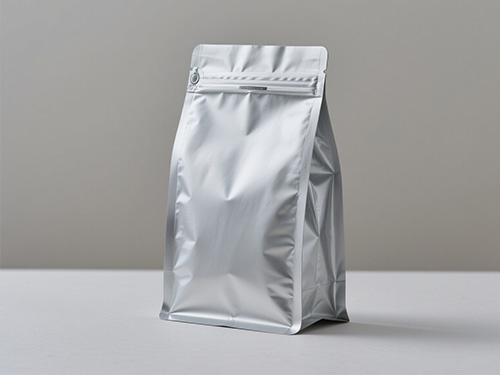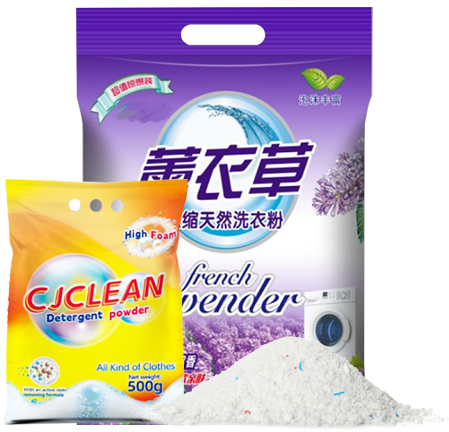Table des matières
Introduction

La première chose que votre client touche est votre emballage. C'est la première étape entre votre marque et votre public. Sur un marché saturé, une boîte générique ou un sac fragile peut sembler une occasion manquée. Un sac d'emballage personnalisé et bien conçu, en revanche, est un outil puissant. Il transforme un simple achat en une expérience de marque mémorable, vous démarquant instantanément de la concurrence.
Ce guide est votre ressource complète pour vous familiariser avec l'univers des sacs d'emballage personnalisés. Nous vous accompagnerons dans toutes les décisions clés, du choix des matériaux et des méthodes d'impression à la compréhension du processus de fabrication. Que vous soyez une petite entreprise lançant un nouveau produit ou une marque établie en quête de renouveau, ce guide vous apportera les connaissances nécessaires pour créer une solution d'emballage unique et percutante.
Pourquoi votre marque a besoin de sacs d'emballage personnalisés
Chaque marque a une histoire, et l'emballage en est un élément essentiel. Un sac personnalisé de haute qualité témoigne immédiatement de votre professionnalisme et de votre souci du détail. Il montre à vos clients que vous vous souciez de leur expérience dans son intégralité, de la réception de votre produit à son ouverture. Ce niveau de soin renforce la confiance et la fidélité que l'argent ne peut acheter.
De plus, un sac sur mesure fait office de panneau d'affichage mobile. Lorsque vos clients portent votre sac à votre marque, ils deviennent des publicités ambulantes, augmentant la visibilité et la portée de votre marque sans que vous ayez à lever le petit doigt. C'est un investissement rentable, tant en termes de fidélisation que de développement de nouveaux clients.
Choisir le bon matériau pour votre sac d'emballage personnalisé
Le choix du matériau influence tous les aspects, de la durabilité et du toucher de votre emballage à son impact environnemental. Ce n'est pas un choix simple ; c'est un choix stratégique qui doit s'aligner sur les valeurs de votre marque et les besoins de votre produit.
Papier ou plastique : lequel est le meilleur ?
Les emballages en papier, notamment ceux issus de sources recyclées, sont souvent considérés comme une option haut de gamme et écologique. Leur aspect classique et sophistiqué en fait un choix idéal pour les vêtements, les cadeaux et les produits de luxe. Cependant, ils ne sont pas forcément adaptés aux produits nécessitant une protection contre l'humidité ou les déchirures.
Les emballages plastiques, quant à eux, offrent une durabilité et une flexibilité inégalées, ainsi qu'une barrière efficace contre l'eau et l'oxygène. Nous utilisons souvent des matériaux comme le PEBD, le PEHD et le PET. Ce sont d'excellents choix pour les produits alimentaires, cosmétiques et industriels, où la sécurité est primordiale. Heureusement, de nombreuses options plastiques modernes sont également recyclables, ce qui contribue à répondre aux préoccupations environnementales.
Les avantages des emballages en sachets souples
Les sachets souples sont devenus un choix populaire dans de nombreux secteurs, et pour cause. Légers, ils utilisent moins de matériaux que les contenants rigides et sont incroyablement polyvalents. Grâce à des options comme des fermetures à glissière et des encoches de déchirure, ils offrent praticité et protection supérieure. Pour les marques des secteurs de l'agroalimentaire, de la santé et de la beauté, les sachets souples offrent un look moderne et élégant, tout en permettant un gain de place et une réduction des frais d'expédition.
Éléments de conception essentiels pour votre personnalisation Sac d'emballage
Un design d'emballage réussi ne se résume pas à un simple logo sur un sac. C'est un mélange stratégique d'art et de praticité. Votre design doit être immédiatement reconnaissable et communiquer efficacement l'essence de votre marque.
- Votre logo doit être la vedette. Assurez-vous qu'il soit bien visible et visible. Conservez les couleurs et polices officielles de votre marque pour une image cohérente.
- La police que vous utilisez doit être facile à lire et refléter la personnalité de votre marque, qu'elle soit élégante et sophistiquée ou audacieuse et amusante.
- Des graphiques de haute qualité peuvent raconter une histoire, mettre en évidence les principales caractéristiques d’un produit ou évoquer une émotion spécifique.
- N'oubliez pas les aspects pratiques ! Indiquez clairement le nom de votre produit, ses ingrédients, ses instructions ou toute autre information importante dont votre client a besoin.
Comprendre les différentes méthodes d'impression
La qualité de votre design dépend de la méthode d'impression utilisée. La technique la plus adaptée dépend de la complexité de votre design, de votre budget et de la quantité nécessaire.
- Impression flexographique : C'est notre solution idéale pour les commandes importantes et les designs avec un nombre limité de couleurs. C'est une méthode rapide et économique, idéale pour les sacs de courses et les emballages en vrac.
- Impression en héliogravure : Si vous recherchez un niveau de détail et une précision des couleurs optimaux, l'héliogravure est la solution. Idéale pour les créations complexes en haute résolution sur films souples, elle est idéale pour les très grands tirages de produits haut de gamme.
- Impression numérique : C'est l'option la plus flexible pour les commandes de petite et moyenne taille. L'impression numérique vous permet de créer des motifs complexes et même d'utiliser des données variables sans plaques d'impression, ce qui la rend idéale pour les petits tirages ou les projets hautement personnalisés.
Ajout de fonctionnalités fonctionnelles à votre P personnaliséemballage Sac

Un bon sac n'est pas seulement beau, il est aussi fonctionnel. Des caractéristiques adaptées peuvent faciliter l'utilisation de votre produit, le sécuriser et faire ressortir votre emballage.
- Fermetures à glissière et fermetures : Les fermetures à glissière refermables sont idéales pour les produits qui ne sont pas utilisés en une seule fois, comme le café, les snacks ou la nourriture pour animaux. Elles permettent de conserver la fraîcheur du contenu et de prolonger sa durée de conservation.
- Entailles de déchirure : Ces petites encoches sur le côté d'une pochette permettent aux clients d'ouvrir facilement le sac proprement sans avoir à chercher une paire de ciseaux.
- Trous de suspension : Idéal pour les présentoirs de vente au détail, les trous de suspension vous permettent d'accrocher soigneusement vos produits sur un panneau perforé, les rendant plus visibles pour les acheteurs.
- Effacer les fenêtres : Une fenêtre transparente sur un sac permet aux clients de voir le produit à l'intérieur, instaurant ainsi la confiance et mettant en valeur la qualité de ce que vous vendez.
L'essor des sacs d'emballage personnalisés respectueux de l'environnement

Sacs d'emballage personnalisés
Les images sont données à titre indicatif uniquement. Nous proposons des services complets de personnalisation de produits et de branding. Spécialisés en OEM/ODM, nous proposons gratuitement des épreuves, un dépôt en agence et un contrôle qualité. Grâce à notre service complet, créez et personnalisez facilement votre marque.
Le développement durable n'est plus un simple mot à la mode ; c'est une attente fondamentale des consommateurs d'aujourd'hui. Choisir un emballage écologique peut considérablement renforcer l'attrait de votre marque et montrer votre engagement envers la planète. Cela peut inclure l'utilisation de matériaux :
- Recyclable: Fabriqué à partir de matériaux pouvant être traités et réutilisés, détournant ainsi les déchets des décharges.
- Biodégradable: Conçu pour se décomposer naturellement dans l’environnement au fil du temps.
- Fabriqué à partir de contenu recyclé post-consommation (PCR) : Utiliser des matériaux recyclés à partir de déchets de consommation.
Comparaison des matériaux d'emballage courants
| Type de matériau | Applications courantes | Avantages | Inconvénients |
| Papier | Vêtements, cadeaux, produits secs | Respectueux de l'environnement, toucher haut de gamme, hautement imprimable | Moins durable, pas résistant à l'humidité |
| Plastique | Alimentation, cosmétiques, produits industriels | Durable, barrière contre l'humidité, polyvalent, économique | Peut être moins écologique s'il n'est pas recyclé |
| Pochettes souples | Collations, café, poudres | Léger, peu encombrant, idéal pour la durée de conservation | Peut être plus complexe à produire |
Le processus de fabrication du début à la fin
Créer l'emballage idéal est un processus minutieux, et un fabricant de confiance comme Shenlong Packaging peut vous accompagner à chaque étape. Le processus commence par la finalisation de votre design et le choix du matériau. Nous passons ensuite au prépresse, où votre design est préparé pour l'impression.
Après l'impression, nous formons et scellons le matériau, souvent grâce à des techniques avancées de moulage par soufflage ou par injection, pour créer la forme finale du sac. À chaque étape, nous appliquons des mesures de contrôle qualité strictes pour garantir que le produit final réponde parfaitement à vos spécifications.
Conclusion
Choisir le bon sac d'emballage personnalisé Il s'agit d'une décision stratégique qui impacte directement la perception de votre marque, la satisfaction client et vos résultats financiers. En comprenant les éléments clés des matériaux, du design et de la fabrication, vous êtes en mesure de créer une solution d'emballage à la fois esthétique et fonctionnelle.
À Emballage ShenlongForts de plus de 20 ans d'expérience en tant que fabricant d'emballages et de produits chimiques courants, nous sommes là pour vous proposer des solutions personnalisées, de l'impression couleur au moulage par soufflage et par injection, pour vos produits de marque distributeur ou vos produits de soins personnels. Besoins de fabrication OEMNous sommes prêts à vous aider à transformer votre vision en réalité.
FAQ
Quel est le délai typique pour une commande ?
Les délais de livraison peuvent varier en fonction de la complexité de votre projet, des matériaux choisis et de la quantité commandée. Comptez généralement 4 à 8 semaines après la finalisation du projet.
Quelle est la quantité minimum de commande (MOQ) pour un emballage personnalisé sacs?
Nos quantités minimales de commande dépendent du matériau et de la méthode d'impression. Pour des impressions plus complexes comme l'héliogravure, la quantité minimale de commande peut être plus élevée. Il est préférable de discuter de votre projet avec nous pour obtenir un devis précis.
Comment puis-je m’assurer que mon emballage personnalisé est écologique ?
Nous pouvons vous aider à choisir parmi une variété d'options écologiques, notamment les plastiques recyclables, le papier à contenu recyclé et les matériaux biodégradables. Nous vous conseillerons également sur la meilleure façon de partager vos choix durables avec vos clients.
Pouvez-vous m'aider avec la conception de mon modèle personnalisé ? conditionnement sac?
Bien que nous soyons un fabricant, nous pouvons travailler avec vos fichiers de conception existants ou vous fournir des conseils sur les meilleures pratiques pour garantir que votre illustration est parfaitement optimisée pour nos processus d'impression et de production.

